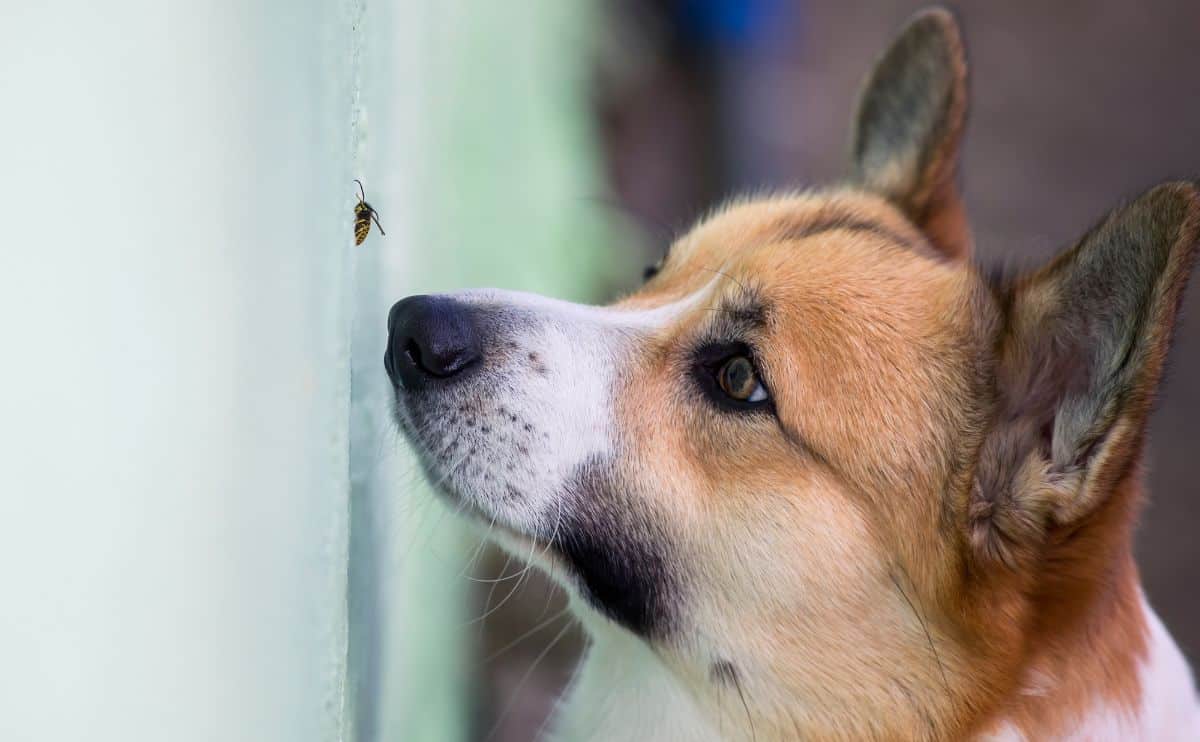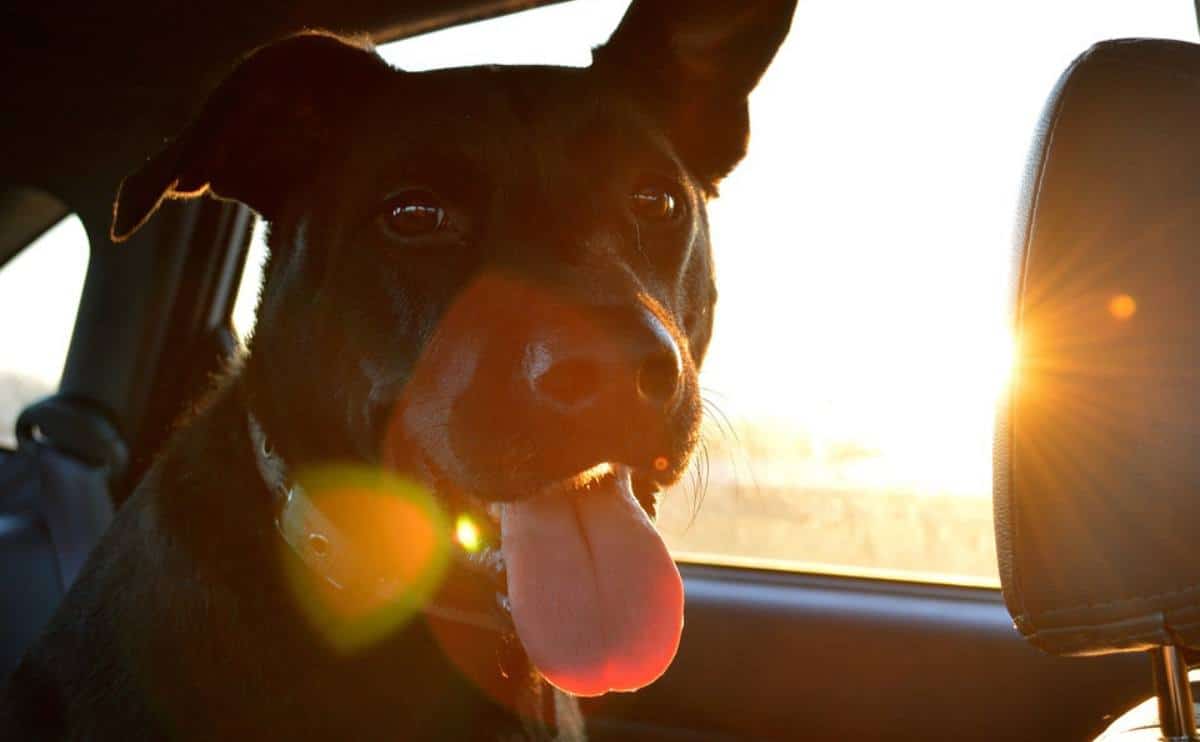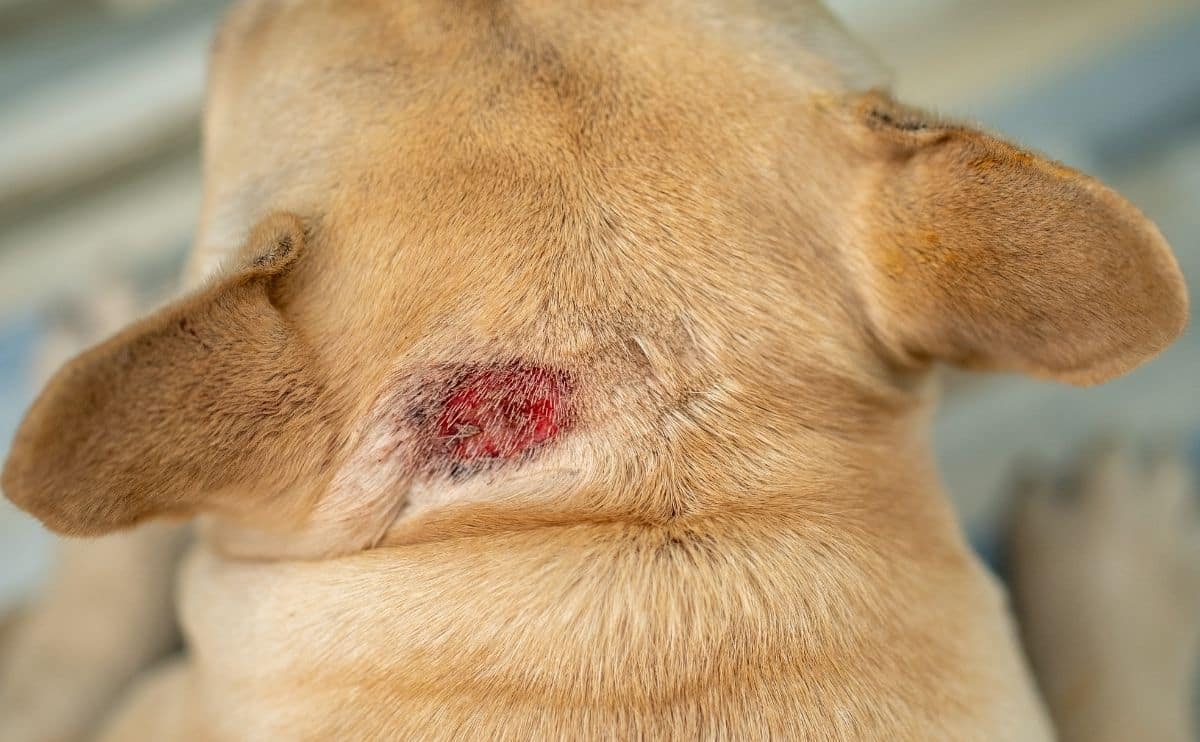Recognize The Early Signs Of Stomach Cancer In Dogs (Before It’s Too Late)
When you purchase through links on our site, we may earn a commission. Here’s how it works.

A stomach tumor in dogs can be very serious and can cause your dog pain as well as other unpleasant symptoms. Let’s learn more about stomach cancer in dogs, including what to look out for, how it is treated, and what to expect.
Table of Contents
Signs Of Stomach Cancer In Dogs
The symptoms of stomach cancer in dogs vary depending on the stage of the disease. In the early stages, a tumor on a dog’s stomach could cause no symptoms at all. However, as the tumor grows and takes up more space within the stomach, food and fluids won’t pass so easily, so you might notice vomiting or regurgitation.
You might also notice signs of nausea, like dribbling or reduced appetite. As the cancer progresses further, vomiting may become very regular, and your dog may struggle to keep food and water down at all, leading to weight loss, dehydration, weakness, and collapse.
Sometimes, the lump can ulcerate, or the stomach can rupture, and fresh (red) or digested (black) blood may be seen within the stools or vomit. If you notice anything that could be blood in your dog’s vomit or feces, it’s important to contact your veterinarian for advice without delay.
Types Of Abdominal Masses In Dogs
Dogs can get lots of different types of ‘stomach’ lumps. In layman’s terms, a stomach lump could refer to a mass on the skin of a dog’s belly, within the muscle or deeper tissues of the abdominal wall, or within the abdomen itself. Of course, anatomically, not every abdominal mass is a stomach mass since many other organs are within the abdomen.
A true mass in a dog’s stomach would be unlikely to be visible outside their body. However, some very large lumps can cause visible swellings or distortion to the shape of the abdomen. For instance, a dog with a lump on the right side of their abdomen could have a lump under the skin or between the muscle layers on this side that gave the impression of a lump within the abdomen itself, or the lump could be caused by the stomach or another organ pressing on the stomach.
How To Detect Stomach Cancer In Dogs
If your dog shows symptoms like vomiting, regurgitation, bloating, or weight loss, you should take it to the veterinary clinic. The vet can examine it and, if necessary, perform screening blood tests to check for an underlying cause.
To diagnose stomach cancer in dogs, the veterinarian might suggest an X-ray. However, while an X-ray will often show the shape and size of the stomach, it won’t always give much information about the thickness of the stomach wall or any lumps within it. To get that extra information, the veterinarian may need to do other tests like using contrast media, performing an ultrasound scan, or passing an endoscope.
Stomach Cancer In Dogs Life Expectancy
Finding out that your dog might have stomach cancer is an emotional and worrying time. Naturally, no pet parent wants their dog to be unwell, and they want their canine companion to live a long, happy life. You might be wondering if a dog has stomach cancer and how long they have to live. Sadly, the prognosis for dogs with stomach cancer is generally poor, with reported survival times of less than three months in untreated dogs.
Of course, the exact life expectancy will depend on the type of tumor, its potential to spread, its ability to be treated, and whether it was detected early. Some types of stomach tumors can be surgically removed, or chemotherapy is given, both of which have the potential to extend survival time. As always, it’s important to know your dog’s normal behaviors and keep an eye out for any changes or symptoms of being unwell since early diagnosis means prompt treatment and, hopefully, a better outcome.
Stages Of Stomach Cancer In Dogs
Not every dog with stomach cancer will follow the same journey, but here are some typical stages in the life of a dog with stomach cancer.
No Symptoms
A small stomach tumor may not cause any symptoms, so your dog may behave normally in the early stages.
Early Symptoms
Although many different ailments can explain early symptoms of stomach cancer and may appear insignificant, seeking a vet’s advice promptly could mean a quicker diagnosis and more effective treatment. At this stage, you might notice occasional vomiting, an occasional bloody or pink tinge to the vomit, a reduced appetite, or lethargy. You might occasionally notice that your dog seems uncomfortable in their abdomen but with no particular pattern and no severe pain.
Regular Symptoms
As the tumor grows, subtle waxing and waning symptoms will become more consistent. Whereas any episodes of vomiting or pain may have seemed sporadic and unrelated to each other, at this stage, vomiting could be daily or every other day, with minimal or no response to veterinary medications.
Signs Of Spread
Many stomach tumors can potentially spread elsewhere (metastasize), which could lead to other symptoms related to the part of the body where the spread has occurred. Symptoms might include weight loss, breathing distress, an enlarged abdomen, diarrhea, weakness, and lethargy.
Reduced Quality Of Life
In any life-limiting or chronic condition, keeping an eye on your dog’s quality of life is important. However, deterioration is rarely a uniform decline, and your dog will likely have bad days and better days. This period can be an emotional rollercoaster, where one minute you’re tearfully making plans to say your goodbyes, then the next you’re greeted by a waggy tail and a nudge towards the door for walkies.
To help you judge your dog’s quality of life more objectively, it’s a good idea to look back at the previous week or two and count how many good and bad days your dog has had. Appetite, mobility, and signs of pain are particularly important. If, looking back, your dog has been having more bad days than good days, likely, their quality of life is not where it should be, and it may be time to speak to your veterinarian about euthanasia.
Severe Decline
As stomach cancer advances, it takes a greater and greater toll on your dog’s body. The tumor may reach a size where it fully obstructs the outflow of the stomach, meaning food and water cannot pass through. This could lead to dehydration and malnutrition but also means there is a risk of the stomach rupturing, causing severe pain and infection. Sadly, if the tumor has spread elsewhere, there is also a risk of internal bleeding, collapse, and breathing distress. Contact your veterinarian immediately if your dog has dry or pale gums, cold extremities, cannot stand, or is unresponsive.
Frequently Asked Questions
Here are some other questions we receive from our readers about stomach cancer in dogs. If you have other questions we haven’t addressed, please let us know in our comments.
Is Stomach Cancer In Dogs Painful?
Stomach cancer in dogs can be very painful. The mass can cause an obstruction, leading to uncomfortable bloating and risk of rupture, and it can also become ulcerated, causing intense pain.
How Common Is Stomach Cancer In Dogs?
Thankfully, stomach cancer is not common in dogs, and in my years of practice, I have probably only seen one or two cases a year. However, of all the types of stomach tumors that affect dogs, gastric adenocarcinoma is the most common.
See The Vet Immediately Should You Suspect Any Issues
Stomach cancer in dogs can progress quite quickly, and sadly, even with prompt diagnosis and treatment, the prognosis is guarded. Therefore, it’s really important to get any possible symptoms checked out by a veterinarian, even if you think they could be nothing. You can also reference our guides on cancer in dogs, lumps on dogs, and types of cysts on dogs and find out if pet insurance covers cancer.



